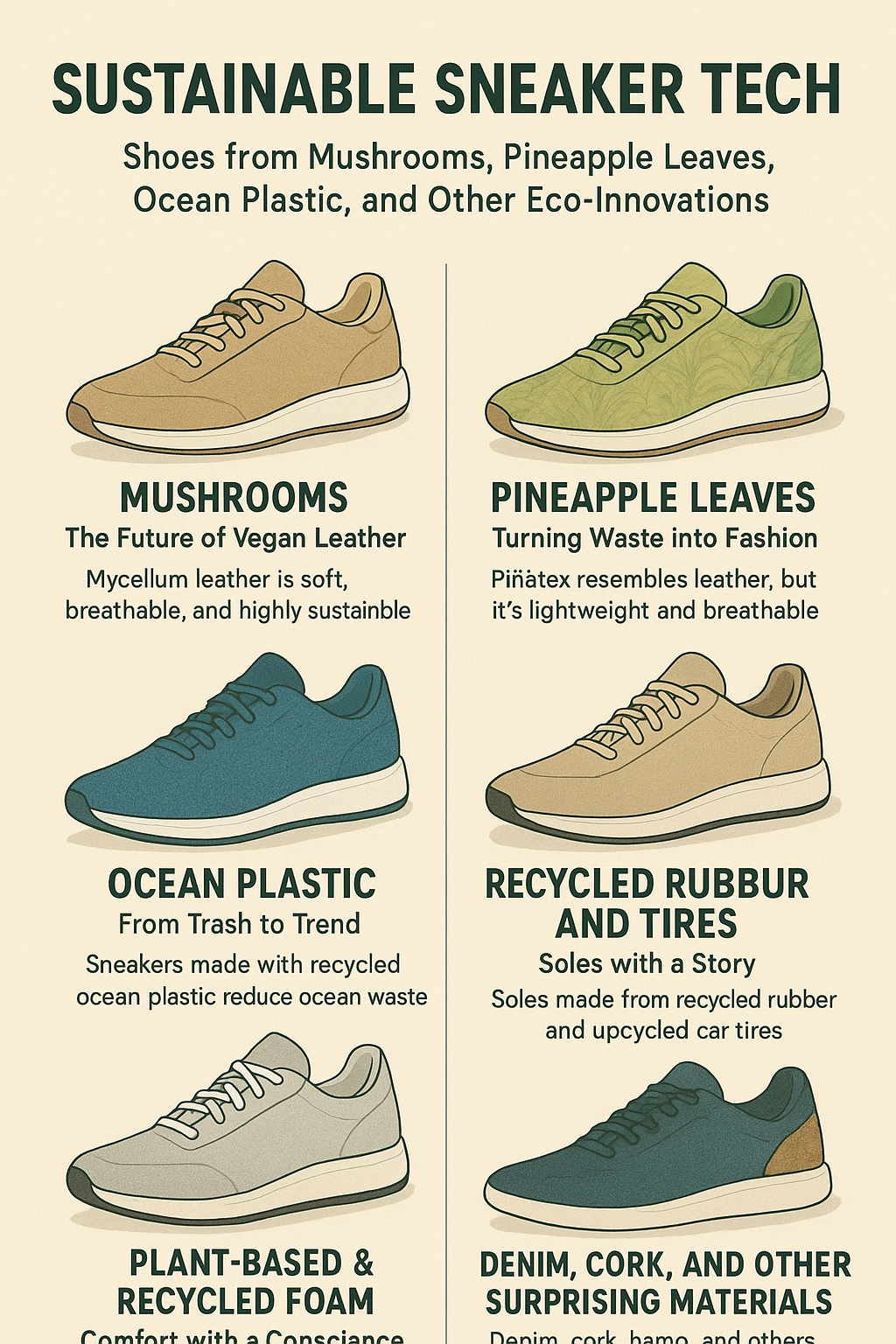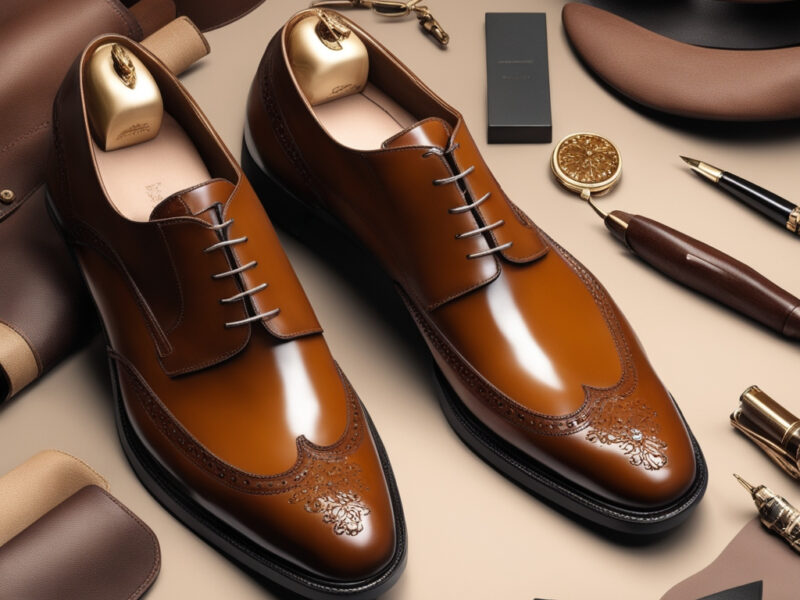When you think of sneakers, the first thing that comes to mind might be comfort, performance, or style. But in recent years, sneakers have taken on a new role: being champions of sustainability. The footwear industry, often criticized for its heavy carbon footprint and synthetic materials, is now shifting gears. Brands are embracing innovative eco-materials—like mushrooms, pineapple leaves, and even plastic waste collected from the oceans—to craft the sneakers of tomorrow.
This isn’t just a fashion trend; it’s a movement that blends technology, design, and sustainability. Let’s dive into the fascinating world of sustainable sneaker tech and see how your next pair of kicks might actually help the planet.
Why Sustainability in Sneakers Matters
The sneaker industry is massive. Millions of pairs are produced every year, with traditional models often made from plastics, synthetic leathers, and foam. Unfortunately, these materials take hundreds of years to decompose, contributing to landfill waste and environmental pollution.
By introducing eco-innovations, brands are cutting down their carbon footprint, rethinking waste management, and proving that style and sustainability can walk hand in hand.
1. Mushrooms: The Future of Vegan Leather
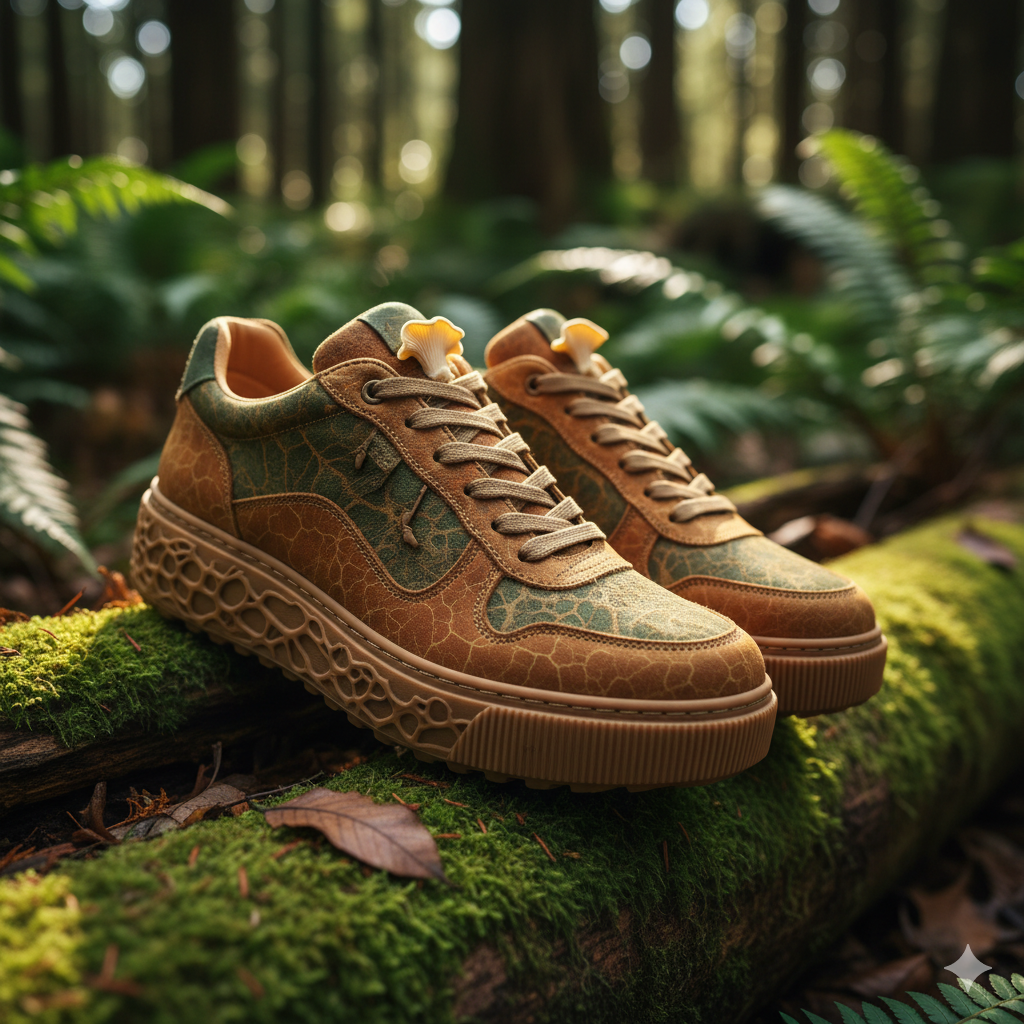
Imagine slipping into sneakers made from fungi. Sounds bizarre? It’s already happening.
Mycelium Leather
Mushrooms, or more specifically their root system called mycelium, can be grown into durable, leather-like materials. This “mushroom leather” is soft, breathable, and highly sustainable.
Eco-benefits: Mushroom leather grows quickly, requires less water, and is 100% biodegradable.
Brands leading the charge: Adidas, Stella McCartney, and Bolt Threads have collaborated to create sneaker uppers and trims from mycelium.
This innovation is especially appealing to sneaker lovers who want cruelty-free products without compromising on style or durability.
2. Pineapple Leaves: Turning Waste into Fashion
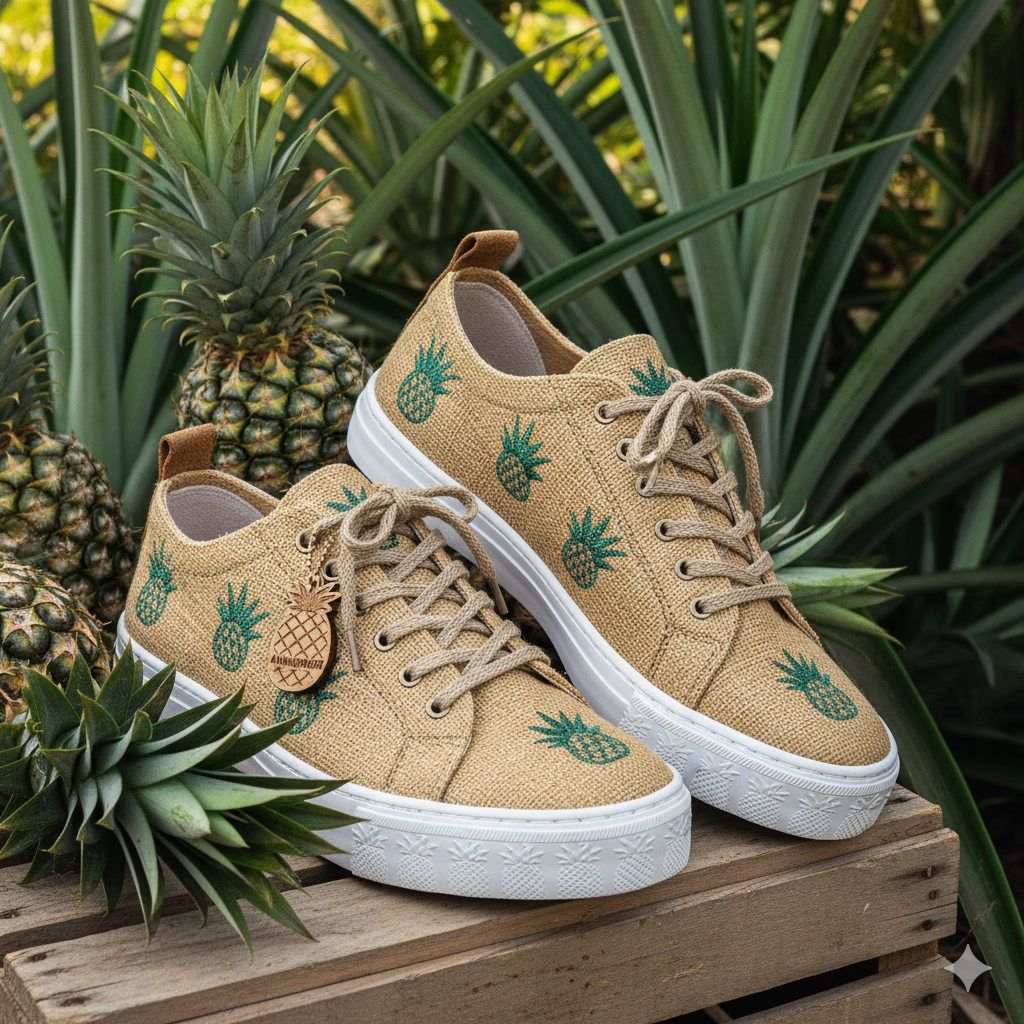
Every year, the pineapple industry generates tons of agricultural waste, especially leaves. Instead of letting them rot, innovators have created Piñatex, a sustainable textile made from pineapple leaf fibers.
Eco-benefits: It reduces agricultural waste and provides additional income to pineapple farmers.
Texture & look: Piñatex resembles leather, but it’s lightweight and breathable.
In sneakers: Companies like Hugo Boss and smaller ethical brands are experimenting with pineapple leaf uppers, showing that fruit waste can look chic.
From the farm to your feet, pineapple leaves are making sneakers more sustainable and stylish.
3. Ocean Plastic: From Trash to Trend
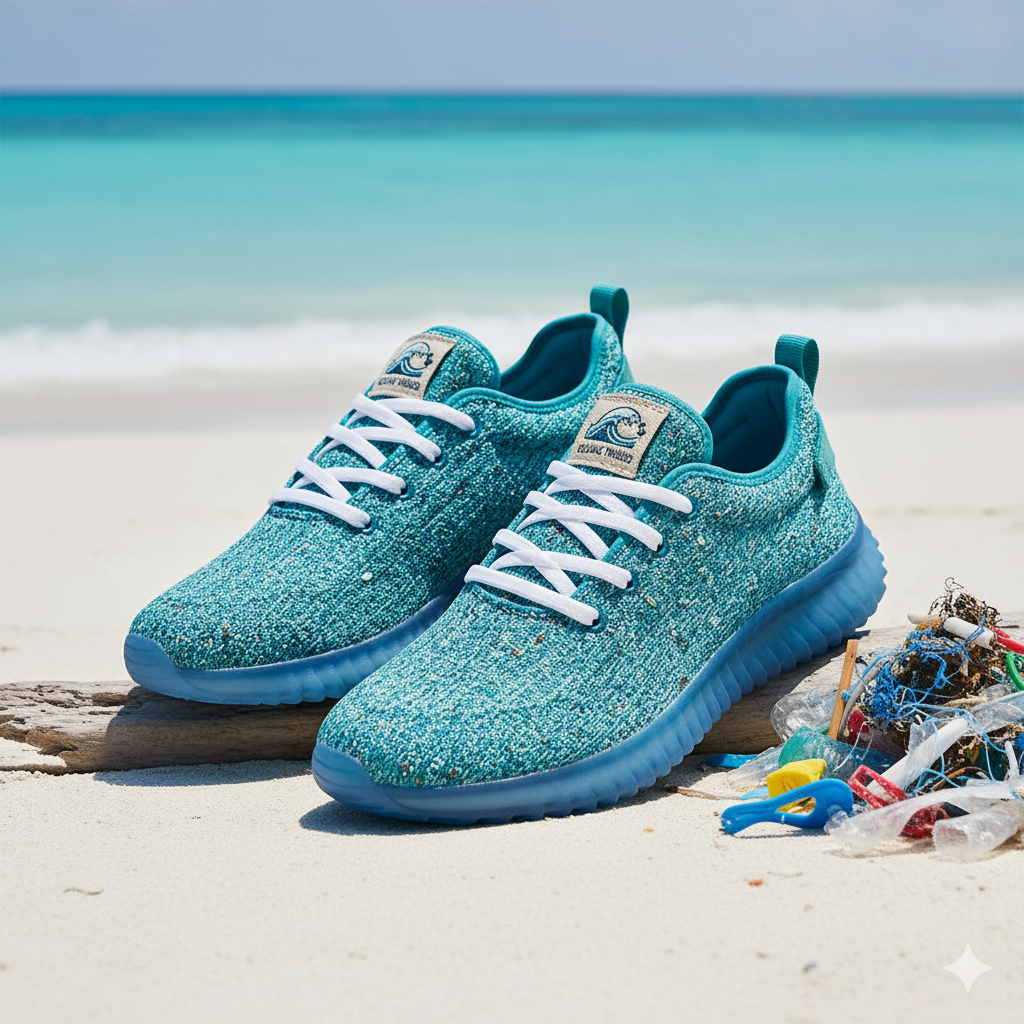
Plastic waste is one of the biggest environmental challenges, with millions of tons dumped into our oceans annually. Sneaker brands are now turning that problem into a solution.
Impact: Every pair saves about 11 plastic bottles from polluting the ocean.
Parley for the Oceans x Adidas: This iconic collaboration has produced millions of pairs of sneakers made with recycled ocean plastic. Each pair reuses plastic bottles and fishing nets recovered from the sea.
Performance with purpose: These sneakers aren’t just eco-friendly; they’re also lightweight, breathable, and perfect for athletes.
When you wear sneakers made from ocean plastic, you’re literally walking on a cleaner future.
4. Recycled Rubber and Tires: Soles with a Story
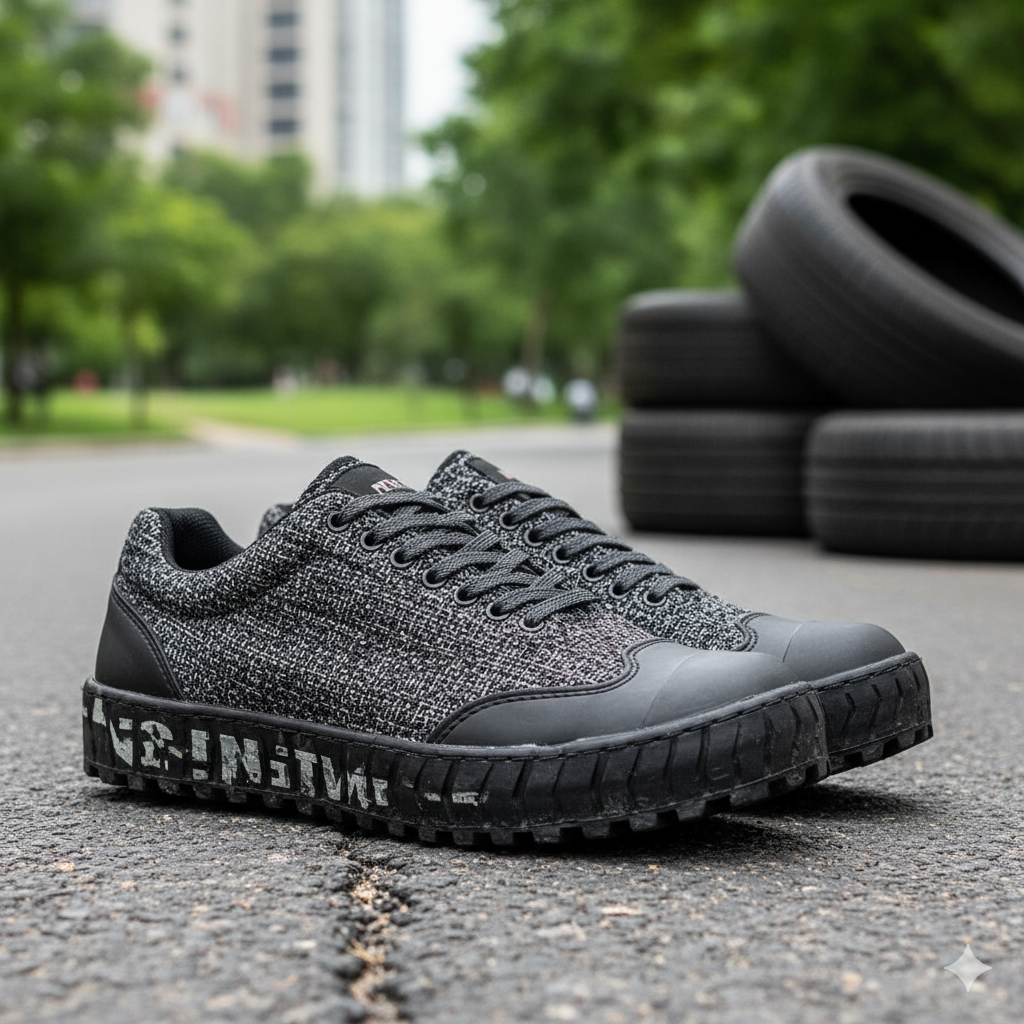
The sole of a sneaker often uses virgin rubber, which is resource-heavy. But now, brands are creating soles made from recycled rubber and upcycled car tires.
Eco-benefits: Less landfill waste, more circular economy.
Durability: Tires are designed to withstand high pressure, so when repurposed, they create soles that are extra tough.
Examples: Brands like Indosole and Veja have pioneered rubber recycling in footwear.
Every step you take in these sneakers is one less burden on the planet.
5. Plant-Based and Recycled Foam
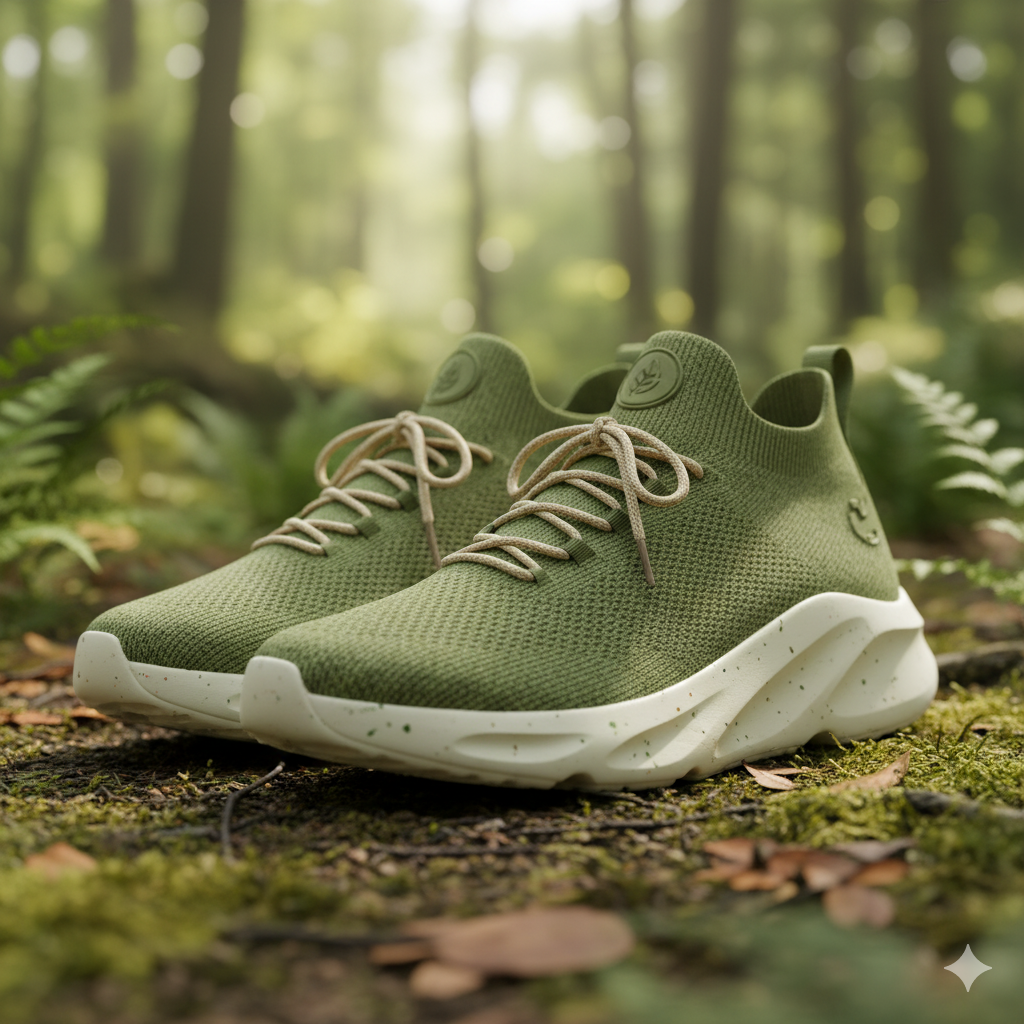
Sneaker comfort largely depends on midsoles and cushioning, traditionally made from petroleum-based EVA foam. But innovative companies are switching to plant-based foams.
Sugarcane EVA: Renewable sugarcane is used to create cushioned, durable midsoles, as seen in Allbirds sneakers.
Algae foam: Some sneakers now use foams derived from algae blooms, cleaning waterways in the process.
This is sneaker tech that combines comfort and sustainability, giving you that bounce in your step—without harming the Earth.
6. Denim, Cork, and Other Surprising Materials
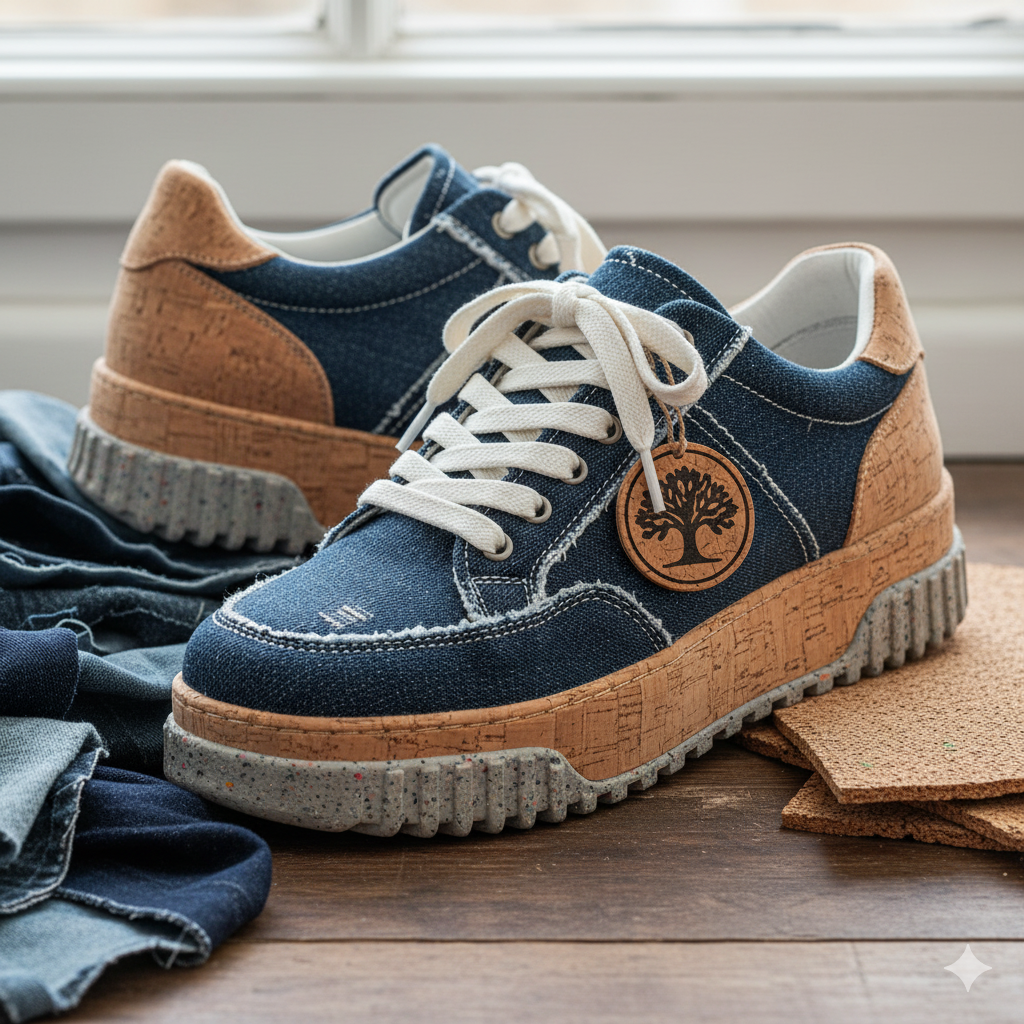
pineapples. Sneakers today also feature:
- Recycled denim: Giving old jeans a second life.
- Cork: Lightweight, flexible, and renewable, often used in insoles.
- Hemp: Strong, breathable, and eco-friendly.
Each material adds not only sustainability but also a unique texture and look to sneakers.
The Tech Behind the Style
What makes these innovations truly fascinating is the technology that powers them.
- Bio-fabrication: Growing materials in labs, like mycelium leather.
- Recycling innovation: Breaking down plastic waste into usable fibers.
- Closed-loop systems: Some companies even let you return worn-out sneakers to be recycled into new pairs.
This isn’t just about fashion—it’s about reshaping the future of materials science.
How You Can Support Sustainable Sneaker Tech
- Choose wisely: Look for brands highlighting eco-materials.
- Care for your sneakers: Proper maintenance extends their life, reducing waste.
- Recycle responsibly: Return or donate old sneakers instead of throwing them away.
Your choices as a consumer can push brands to innovate further.
FAQs on Sustainable Sneaker Tech
Q1. Are sneakers made from mushrooms or pineapple leaves durable?
Yes! Mycelium leather and Piñatex undergo rigorous treatment to make them as durable and stylish as conventional materials. They’re strong, flexible, and suitable for everyday wear.
Q2. Do eco-friendly sneakers cost more?
Some do, because of research and new production methods. However, as demand grows, prices are becoming more competitive, making sustainable sneakers more accessible.
Q3. Can sneakers made from ocean plastic really help the environment?
Absolutely. Each pair removes plastic waste from oceans, raises awareness, and supports large-scale clean-up projects. While not a complete solution, it’s a big step forward.
Q4. Are sustainable sneakers comfortable?
Yes! Innovations like plant-based foams and recycled cushioning ensure comfort and performance are not compromised. Many athletes and sneakerheads swear by them.
Q5. Which brands are leading in sustainable sneaker tech?
Adidas (with Parley), Allbirds, Veja, Stella McCartney, and smaller eco-focused startups are making waves in the sustainable sneaker movement.
Final Thoughts
The sneaker revolution isn’t just about design anymore—it’s about responsibility. From mushrooms to pineapples, from ocean waste to recycled tires, sustainable sneaker tech is proving that fashion can be futuristic and eco-friendly.
As more brands join this movement, the sneakers on your feet won’t just reflect your style—they’ll reflect your values and your commitment to the planet.
So, next time you lace up, ask yourself: Are your sneakers just shoes, or are they part of a greener future?

